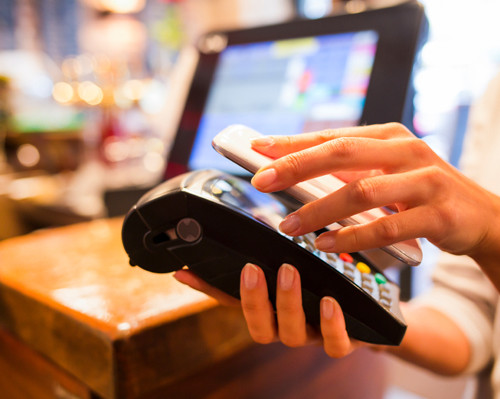Ask any retailer and chances are, mobile commerce is high on their list of priorities for this year. But, many are still grappling with how best to make it work, and this is true both for B2C and B2B organisations. Intershop’s 2013 E-commerce Report found that just like in the B2C space, mobile channels are gaining in importance in B2B.
The survey reveals that mobile apps and mobile stores are the most popular new touch points that organisations are planning to add to their commerce strategy, whether by creating a mobile-optimised store version that allows business buyers to see products, purchase, access their account profile and track orders, or by creating a mobile app that lets buyers see products, negotiate the price, click and buy.
The fact is, mobile commerce is a hot topic and it won’t go away. So, here is what to consider when evaluating its potential.
Start by asking yourself ‘what happens if I don’t do it’, rather than ‘what’s in it for me’. There is already a major shift towards enabling customers to buy how they want, when they want. It is increasingly becoming the norm to make a purchase at any time of the day or night. If you don’t allow your customers to buy 24/7, you are losing out.
And, no longer does this apply only to B2C, the concept of multiple touch points is now equally valid for B2B. That is because workforces are increasingly mobile and working where – and when – they choose, rather than being at their desks 9-5 Monday through Friday. Business and private lives are now so closely interlinked, customers expect the same level of convenience whether they are making a private purchase or a business one.
E-commerce continues to revolutionise shopping behaviour even for business buyers. Enterprise customers, who are now used to the rich online experiences of B2C commerce, are becoming increasingly wary of cumbersome spread sheets and rigid enterprise software systems that are required to price, quote and process business orders.
Powerful B2B e-commerce systems are changing B2B purchasing models as we speak. The convenience of B2B commerce has already been improved considerably over the past years by automating complex workflows and reducing the time and cost of taking paper-based or phone orders. Mobile commerce will raise the bar further still.
QR codes used to be just a fun feature for B2C commerce. Now, they can become a real game changer for today’s mobile workforce. Think about the convenience that scanning a QR code can bring to the construction industry for example. A worker who needs more screws to attach a railing just needs to scan the QR code on the packaging to order more – directly from the construction site.
The code contains all the information that is needed to make sure that exactly the right type of screw is ordered. Predefined and saved purchasing approvals speed up the buying process, and the cost centre allocation is completed during the transaction.
For office workers, mobile commerce can bring the convenience of being able to access e-commerce accounts remotely, to check details or track orders – saving time and money.
The next big thing in B2C
While the potential for mobile commerce in B2B is huge, let’s not forget the ‘home’ of mobile commerce – B2C purchases. If you still think that the only return on investment (ROI) from mobile apps is to make your brand look hip, and that the only other thing you need to do is to make your website more user-friendly for smartphones and tablets, then you are missing a trick.
Remember that people tend to spend more time with their phone than talking to their partner. The phone lets users connect to a world of information – from friends’ recommendations to buyer’s guides through to price comparison engines.
Nowadays, the sales war happens on the handset. While your customers are in your brick-and-mortar store, pure e-commerce players are trying to entice them away, for example through offering useful and attractive features such as price comparisons and free shipping.
This does not mean the end of the brick-and-mortar store though. Customers who want personal service and are prepared to pay for it are better served in a store. Stores can function very well alongside mobile commerce, including as pick-up and drop-off sites for deliveries and returns. They can also offer the opportunity for customers to touch and try the product, helping to reduce return costs. Last but not least, a mobile device can be an extension of the store shelf, when a product is not physically available at this particular store but maybe be at another store nearby, or online.
Mobile and offline can and should be closely linked. Free Wi-Fi in-store can be used to collect data about and better understand shoppers’ buying behaviour. The same is true for dedicated shopping apps. What you need to understand is, which products are the most popular? What factors are causing shoppers to abandon their cart or leave the store? How did they land on your e-commerce site – was it directly or through a referral from a price comparison site? Implemented correctly, mobile commerce provides retailers with a wealth of fresh and valuable data.
If, after all this, you are still thinking it might just be possible to ignore mobile commerce, just remember: The next generation of customers are today’s teenagers, the ‘always on’ generation who are growing up with using their mobiles for nearly everything. Ignore at your peril.






